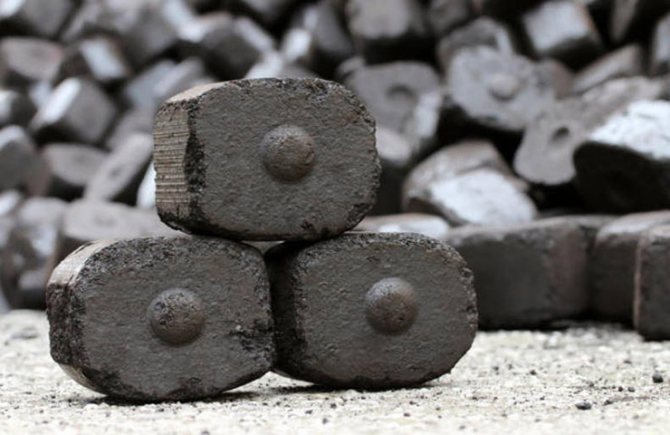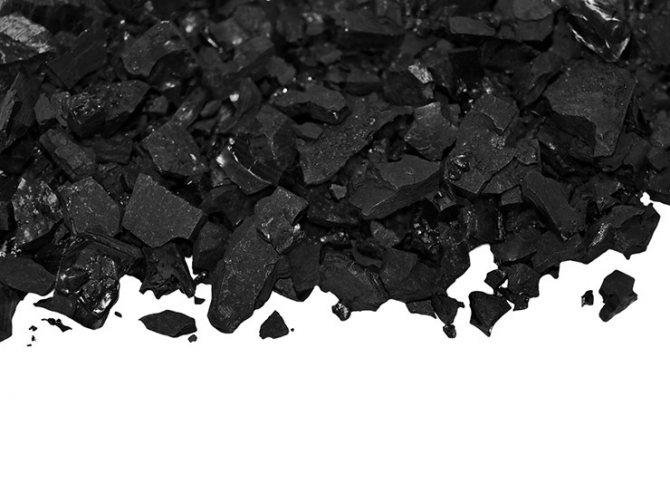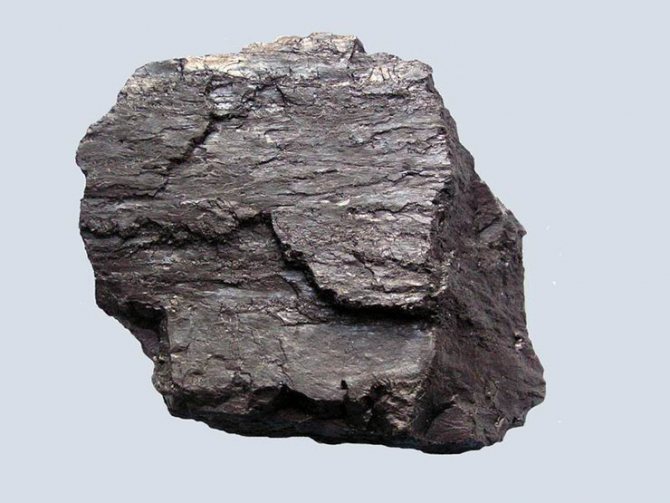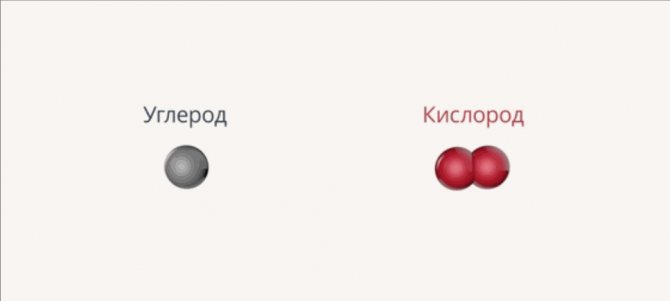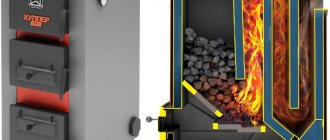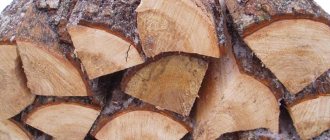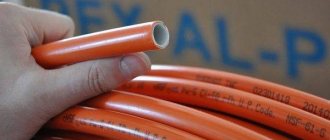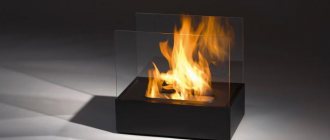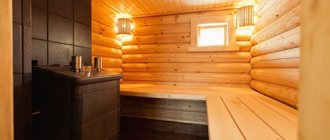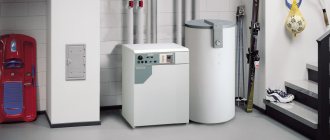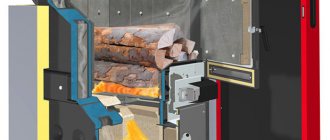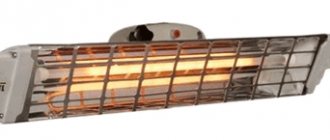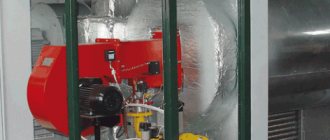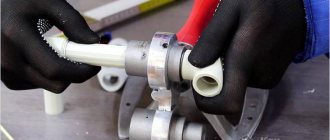The substances of organic origin include fuel, which, when burned, releases a certain amount of thermal energy. Heat generation should be characterized by high efficiency and the absence of side effects, in particular, substances harmful to human health and the environment.
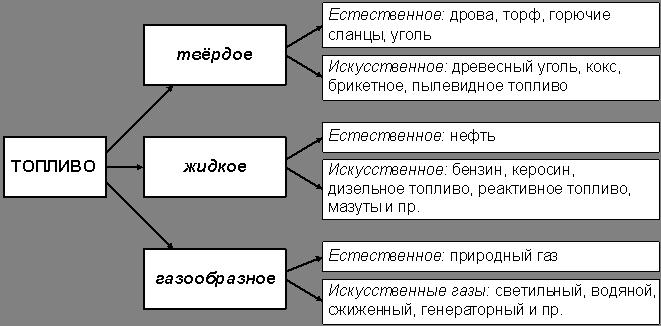
If we consider the fuel from the point of view of its state of aggregation, then the structure of the substance according to the degree of combustibility can be divided into two components. The combustible part includes such chemical elements as hydrogen and carbon, which are in general a hydrocarbon mixture, as well as sulfur. The non-combustible component contains water, mineral salts and the following elements: oxygen, nitrogen and a number of metals.
Complete combustion of 1 kg of fuel, consisting of the above components, promotes the release of various amounts of thermal energy. Any substance is assessed by such an indicator as the heat of combustion.
The heat of combustion of fuel (TFC), measured in kJ / kg, means the amount of energy that is released as a result of the complete combustion of 1 kg of a substance. This indicator is formed at two levels. Higher TST is formed due to the process of condensation of water present in combustion products. When determining the lowest TST, its previous degree is not taken into account.
So, the calculation of heat in internal combustion engines usually comes from the value of the lowest. This is explained quite simply: the process of liquid condensation is impossible in the cylinders. To establish the TST, a calorimetric bomb is used in which compressed oxygen is saturated with water vapor. A sample of a certain type of fuel is placed in this environment, then the results are analyzed.
For petroleum substances, TST is calculated using the following formulas:
QВ = 33913ω (С) + 102995 ω (Н) - 10885 ω (O - S),
QН = QВ - 2512 ω (Н2О),
where ω (C, H, O, S) - mass fractions of elements in fuel,%;
ω (Н2О) - the amount of water vapor in the combustion products of one kg of material,%.
Each type of substance, differing in chemical composition, has its own TST. The most popular types of solid fuels include:
- firewood and coal;
- pellets and briquettes.
Let's consider each type separately.
Firewood
These are sawn or chopped pieces of wood, which, when burned in furnaces, boilers and other devices, generate heat energy.
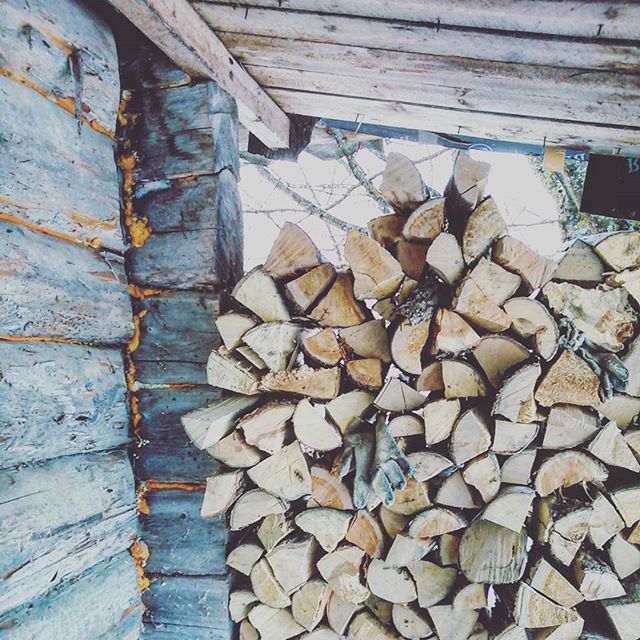

For the convenience of loading into the firebox, the wood material is cut into separate elements up to 30 cm long. To increase the efficiency of their use, the wood should be as dry as possible, and the combustion process should be relatively slow. In many respects, firewood from hardwoods such as oak and birch, hazel and ash, hawthorn are suitable for heating premises. Due to the high resin content, increased burning rate and low calorific value, conifers are significantly inferior in this regard.
Borodino coal
Borodino coal, first of all, benefits from its cost, it is much cheaper than Balakhtinsky. It is recommended to use it for solving larger-scale heating tasks, for example, for power plants or urban boiler houses. Thus, Borodino coal (Borodino) is used for heating rooms with a large cubic capacity. There are two types of this fuel, selected and ordinary, both are produced in one of the Krasnoyarsk basins. Borodino coal has high heat transfer and long-term heat retention.
Coal
It is a natural plant material extracted from sedimentary rock.
This type of solid fuel contains carbon and other chemical elements.There is a division of the material into types depending on its age. Brown coal is considered the youngest, followed by hard coal, and anthracite is older than all other types. The age of a combustible substance is also determined by its moisture content, which is more present in the young material.
In the process of burning coal, environmental pollution occurs, and slag forms on the grates of the boiler, which, to a certain extent, creates an obstacle to normal combustion. The presence of sulfur in the material is also an unfavorable factor for the atmosphere, since this element is converted into sulfuric acid in the air.
However, consumers should not be concerned about their health. Manufacturers of this material, taking care of private customers, strive to reduce the sulfur content in it. The heat of combustion of coal can differ even within the same type. The difference depends on the characteristics of the subspecies and the content of minerals in it, as well as the geography of extraction. Not only pure coal is found as a solid fuel, but also low-enriched coal slag pressed into briquettes.
| Coal type | Specific heat of combustion of material | |
| kJ / kg | kcal / kg | |
| Brown | 14 700 | 3 500 |
| Stone | 29 300 | 7 000 |
| Anthracite | 31 000 | 7 400 |
Types and grades of charcoal
There are 3 main types of charcoal:
- Black: It contains increased amounts of non-volatile carbon, water and ash. It is distinguished by its high density and strength. This type of coal is divided into 2 grades: first and highest. They differ in physical properties. The material is created by heat treatment of oak, ash, maple, beech, birch, hornbeam and elm wood.
- Red: has a high ash percentage. It is made from coniferous trees: pine, spruce, cedar, larch or fir. It has 2 grades: first and second.
- White: Crafted from solid oak, ash, maple, beech, birch, hornbeam and elm. It is not subdivided into additional varieties, but has the limiting quality parameters specified in GOST 7657-84.
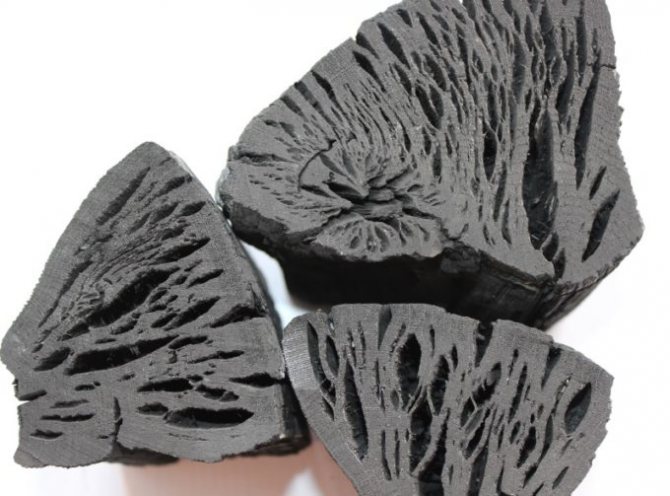

This classification is actively used by Russian manufacturers. It determines the nuances of making a material in accordance with its physical or chemical properties. Foreign manufacturers rarely use these production standards. The world leaders in the supply of this material, located in Latin America, use only eucalyptus in production, which is not specified in world or state standards.
GOST 7657-84 Charcoal. Technical conditions
1 file 106.78 KB
Pellets
Pellets (fuel pellets) is a solid fuel produced industrially from wood and plant waste: shavings, bark, cardboard, straw.
The raw material crushed to the state of dust is dried and poured into the granulator, from where it comes out in the form of granules of a certain shape. A plant polymer, lignin, is used to add viscosity to the mass. The complexity of the production process and high demand form the cost of pellets. The material is used in specially equipped boilers.
Specific heat of combustion of fuel: coal, firewood, gas
When a certain amount of fuel is burned, a measurable amount of heat is released. According to the International System of Units, the value is expressed in Joules per kg or m3. But the parameters can be calculated in kcal or kW. If the value is related to the unit of measurement of the fuel, it is called specific.
What does the calorific value of different fuels affect? What is the value of the indicator for liquid, solid and gaseous substances? The answers to these questions are detailed in the article. In addition, we have prepared a table showing the specific heats of combustion of materials & #; this information will come in handy when choosing a high energy fuel type.
General information on calorific value
The release of energy during combustion should be characterized by two parameters: high efficiency and the absence of the production of harmful substances.
Artificial fuel is obtained in the process of processing natural & #; biofuel. Regardless of the state of aggregation, substances in their chemical composition have a combustible and non-combustible part. The first is carbon and hydrogen. The second consists of water, mineral salts, nitrogen, oxygen, metals.
According to the state of aggregation, the fuel is divided into liquid, solid and gas. Each group is additionally branched into a natural and artificial subgroup (+)
When 1 kg of such a "mixture" is burned, a different amount of energy is released. How much of this energy will be released depends on the proportions of these elements - combustible part, moisture, ash content and other components.
The heat of combustion of fuel (TCT) is formed from two levels - the highest and the lowest. The first indicator is obtained due to condensation of water, in the second this factor is not taken into account.
The lowest TST is needed to calculate the need for fuel and its cost, with the help of such indicators, heat balances are compiled and the efficiency of installations operating on fuel is determined.
TST can be calculated analytically or experimentally. If the chemical composition of the fuel is known, Mendeleev's formula is applied. Experimental techniques are based on the actual measurement of the combustion heat.
In these cases, a special bomb is used to burn & #; calorimetric together with a calorimeter and a thermostat.
The calculation features are individual for each type of fuel. Example: TCT in internal combustion engines is calculated from the lowest value because no liquid condenses in the cylinders.
TST is installed using a calorimetric bomb. The compressed oxygen is saturated with water vapor. A sample of fuel is placed in such an environment and the results are determined
Each type of substance has its own TST due to the peculiarities of the chemical composition. The values vary significantly, the range of fluctuations is 1–10 kcal / kg.
Comparing different types of materials, the concept of equivalent fuel is used, it is characterized by the lowest TST of 29 MJ / kg.
Calorific value of solid materials
This category includes wood, peat, coke, oil shale, briquettes and pulverized fuels. The main constituent of solid fuels is carbon.
Features of different types of wood
The maximum efficiency from the use of firewood is achieved subject to two conditions - dry wood and a slow combustion process.
Pieces of wood are sawn or chopped into pieces up to cm long so that the firewood can be conveniently loaded into the firebox
Ideal for wood-burning stove heating are oak, birch, ash bars. Hawthorn and hazel are characterized by good performance. But conifers have a low calorific value, but a high burning rate.
How different breeds burn:
- Beech, birch, ash, hazel difficult to melt, but they can burn raw due to their low moisture content.
- Alder with aspen do not form soot and "know how" to remove it from the chimney.
- Birch requires a sufficient amount of air in the firebox, otherwise it will smoke and tar on the pipe walls.
- Pine contains more resin than spruce, so it sparks and burns hotter.
- Pear and apple tree it splits more easily than others and burns perfectly.
- Cedar gradually turns into embers.
- Cherry and elm smokes, and the sycamore is difficult to split.
- Linden with poplar burn out quickly.
The TST values of different breeds are highly dependent on the density of specific rocks. 1 cubic meter of firewood is equivalent to approximately liters of liquid fuel and m3 of natural gas. Wood and firewood are classified as low energy efficiency.
Effect of age on the properties of coal
Coal is a natural plant material. It is extracted from sedimentary rocks.This fuel contains carbon and other chemical elements.
In addition to the type, the heat of combustion of coal is also influenced by the age of the material. Brown belongs to the young category, followed by stone, and anthracite is considered the oldest.
The moisture content is also determined by the age of the fuel: the younger the coal, the higher the moisture content in it. Which also affects the properties of this type of fuel
The combustion process of coal is accompanied by the release of substances that pollute the environment, while the boiler grates are covered with slag. Another unfavorable factor for the atmosphere is the presence of sulfur in the fuel. This element, upon contact with air, is transformed into sulfuric acid.
Manufacturers manage to minimize the sulfur content in coal. As a result, the TST differs even within the same species. Affects the performance and geography of production. Not only pure coal, but also briquetted slag can be used as a solid fuel.
The highest fuel capacity is observed for coking coal. Coal, charcoal, brown coal, anthracite also have good characteristics.
Characteristics of pellets and briquettes
This solid fuel is produced industrially from various wood and vegetable waste.
Crushed shavings, bark, cardboard, straw are overdried and with the help of special equipment turns into granules. In order for the mass to acquire a certain degree of viscosity, a polymer, lignin, is added to it.
Pellets are distinguished by an acceptable cost, which is influenced by high demand and features of the manufacturing process. This material can only be used in boilers designed for this type of fuel.
Briquettes differ only in shape, they can be loaded into ovens, boilers. Both types of fuel are divided into types of raw materials: from round timber, peat, sunflower, straw.
Pellets and briquettes have significant advantages over other types of fuel:
- complete environmental friendliness;
- the ability to store in almost any conditions;
- resistance to mechanical stress and fungus;
- uniform and long burning;
- the optimal size of granules for loading into the heating device.
Eco-friendly fuels are a good alternative to traditional heat sources that are not renewable and have a negative impact on the environment. But pellets and briquettes are distinguished by an increased fire hazard, which should be taken into account when organizing a storage place.
If you wish, you can set up the production of fuel briquettes with your own hands, more details & #; in this article.
Parameters of liquid substances
Liquid materials, like solid ones, are decomposed into the following components: carbon, hydrogen, sulfur, oxygen, nitrogen. The percentage is expressed by weight.
Internal organic ballast of the fuel is formed from oxygen and nitrogen; these components do not burn and are conditionally included in the composition. External ballast is formed from moisture and ash.
Gasoline has a high specific heat of combustion. Depending on the brand, it is MJ.
Similar indicators of specific heat of combustion are determined for aviation kerosene & #; 42.9 MJ. Diesel fuel also falls into the category of leaders in terms of calorific value & #; 43,, 6 MJ.
Since gasoline has more TST than diesel fuel, it should have higher both consumption and efficiency. But diesel fuel is more economical than gasoline by%
Liquid rocket fuel, ethylene glycol, is characterized by relatively low TST values. Alcohol and acetone differ in the minimum specific heat of combustion. Their performance is significantly lower than that of traditional motor fuel.
Fuel gas properties
Gaseous fuel consists of carbon monoxide, hydrogen, methane, ethane, propane, butane, ethylene, benzene, hydrogen sulfide and other components. These figures are expressed as a percentage by volume.
Hydrogen has the highest calorific value. Burning, a kilogram of matter releases 83 MJ of heat. But it is distinguished by an increased degree of explosiveness.
Natural gas also has high heating values.
They are equal to MJ per kg. But, for example, pure methane has a higher combustion heat - 50 MJ per kg.
Comparative table of indicators
The table shows the values of the mass specific heats of combustion of liquid, solid, gaseous types of fuel.
| Type of fuel | Unit rev. | Specific heat of combustion | ||
| Mj | kw | kcal | ||
| Firewood: oak, birch, ash, beech, hornbeam | Kg | 15 | 4,2 | |
| Firewood: larch, pine, spruce | Kg | 15,5 | 4,3 | |
| Brown coal | Kg | 12,98 | 3,6 | |
| Hard coal | Kg | 27,00 | 7,5 | |
| Charcoal | Kg | 27,26 | 7,5 | |
| Anthracite | Kg | 28,05 | 7,8 | |
| Wood pellet | Kg | 17,17 | 4,7 | |
| Straw pellet | Kg | 14,51 | 4,0 | |
| Sunflower pellets | Kg | 18,09 | 5,0 | |
| Sawdust | Kg | 8,37 | 2,3 | |
| Paper | Kg | 16,62 | 4,6 | |
| Vine | Kg | 14,00 | 3,9 | |
| Natural gas | m3 | 33,5 | 9,3 | |
| Liquefied gas | Kg | 45,20 | 12,5 | |
| Petrol | Kg | 44,00 | 12,2 | |
| Dis. fuel | Kg | 43,12 | 11,9 | |
| Methane | m3 | 50,03 | 13,8 | |
| Hydrogen | m3 | 33,2 | ||
| Kerosene | Kg | 12 | ||
| Fuel oil | Kg | 40,61 | 11,2 | |
| Oil | Kg | 44,00 | 12,2 | |
| Propane | m3 | 45,57 | 12,6 | |
| Ethylene | m3 | 48,02 | 13,3 | |
It can be seen from the table that the highest TST indicators of all substances, and not only of gaseous ones, have hydrogen. It belongs to high-energy fuels.
The combustion product of hydrogen is ordinary water. The process does not emit furnace slags, ash, carbon monoxide and carbon dioxide, which makes the substance an environmentally friendly combustible. But it is explosive and has a low density, so such fuel is difficult to liquefy and transport.
TST is the most important thermal and operational characteristic of fuel. This indicator is used in various spheres of human activity: heat engines, power plants, industry, housing heating and cooking.
Calorific values help to compare different types of fuel in terms of the degree of energy released, calculate the required mass of fuel, and save on costs.
Do you have anything to add, or do you have questions about the calorific value of different types of fuel? You can leave comments on the publication and participate in discussions & #; the contact form is in the lower block.
Briquettes
Briquettes are solid fuels, similar in many respects to pellets. Identical materials are used for their manufacture: wood chips, shavings, peat, husks and straw. During the production process, the raw material is crushed and compressed into briquettes. This material is also classified as environmentally friendly fuel. It is convenient to store it even outdoors. Smooth, uniform and slow combustion of this fuel can be observed both in fireplaces and stoves, and in heating boilers.
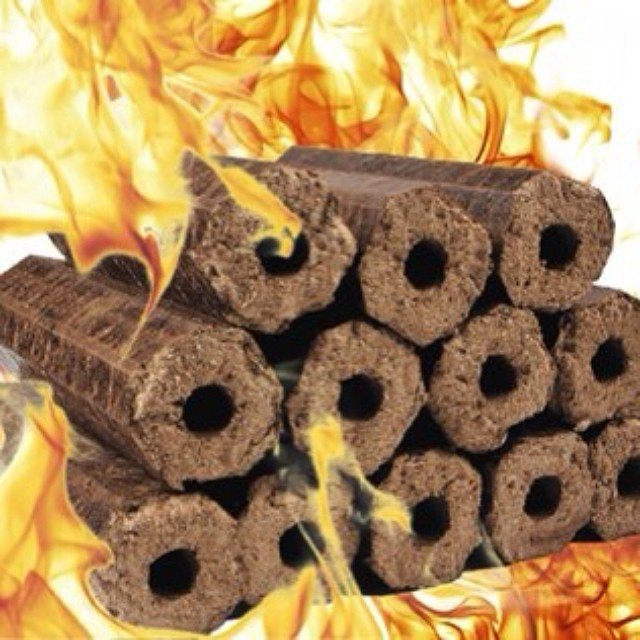

The types of environmentally friendly solid fuels discussed above are a good alternative to heat generation. In comparison with fossil sources of thermal energy, which have an adverse effect on the environment during combustion and are, moreover, not renewable, alternative fuels have clear advantages and relatively low cost, which is important for consumers of some categories.
At the same time, the fire hazard of such fuels is much higher. Therefore, it is required to take some safety measures regarding their storage and use of fire-resistant materials for walls.
Comparison of calorific value, price and convenience of wood briquettes and firewood
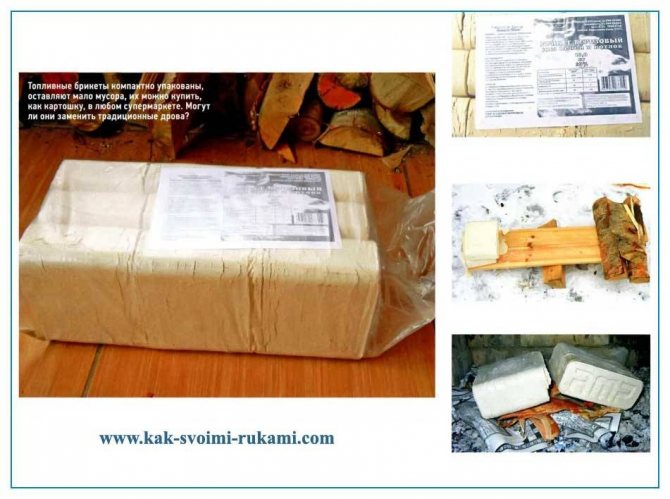

Anti-advertising of firewood on the packaging of fuel briquettes - is it true? We select equal weight portions of fuel briquettes and birch firewood. We kindle both firewood and briquettes with the help of newspapers and birch bark.
Wood briquettes are a modern fuel option. It is produced from woodworking waste - compressed wood shavings and sawdust. Wood briquettes are an environmentally friendly type of fuel, in which there are no "chemical" additives. The bonding of particles occurs at high pressure due to lignin, a polymer contained in the wood itself.Fuel briquettes are conveniently packed in plastic or in cardboard boxes; they take up little space during transportation and storage. The moisture content of fuel briquettes when properly stored is no more than 8-9%.
EVERYTHING YOU NEED FOR THIS ARTICLE IS HERE >>>
When briquettes are burned, little ash is formed, they burn longer than firewood, and generate more heat. So, in any case, it says in the advertisement. Are there any disadvantages to fuel briquettes? Like everything good and convenient, there is only one drawback - the high price.
Reference by topic: Fire safety of homemade stoves and chimneys
How to use charcoal
Charcoal needs to be ignited without using any chemicals: an unpleasant smell from it will remain as long as the fuel burns. Therefore, we take a piece of paper, crumple it, line up a few thin dry splinters around the paper with a "hut", set the paper on fire, wait for the splinters to work, put some dry firewood on top. When they are well lit, you can put in charcoal. And you need to fold it up in a slide. It flares up better this way. If we are talking about barbecue and cooking, then in order for the charcoal to evenly flare up, put those pieces that are on the edges of the slide upstairs. Those that were closer to the center turn out to be on the edge. So we wait until all the pieces are covered with a white bloom and flames stop appearing over them. Now you can fry a kebab.
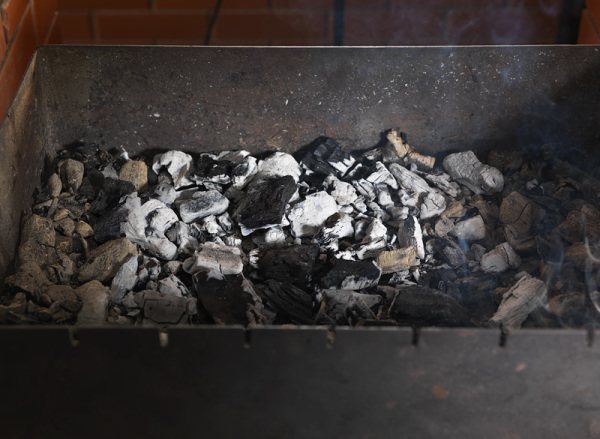

How to light charcoal? Using paper and thin chips or ... a building hair dryer
There is a way to light charcoals without paper, matches or firewood. All you need is a hair dryer and an electrical outlet. Everything. No paper, no matches. Take a hairdryer, turn it on to the maximum, direct the air flow onto the coal piled up in a heap. The first ember will flare up in about half a minute, then the rest will be engaged, in about five minutes everything will be on fire.

